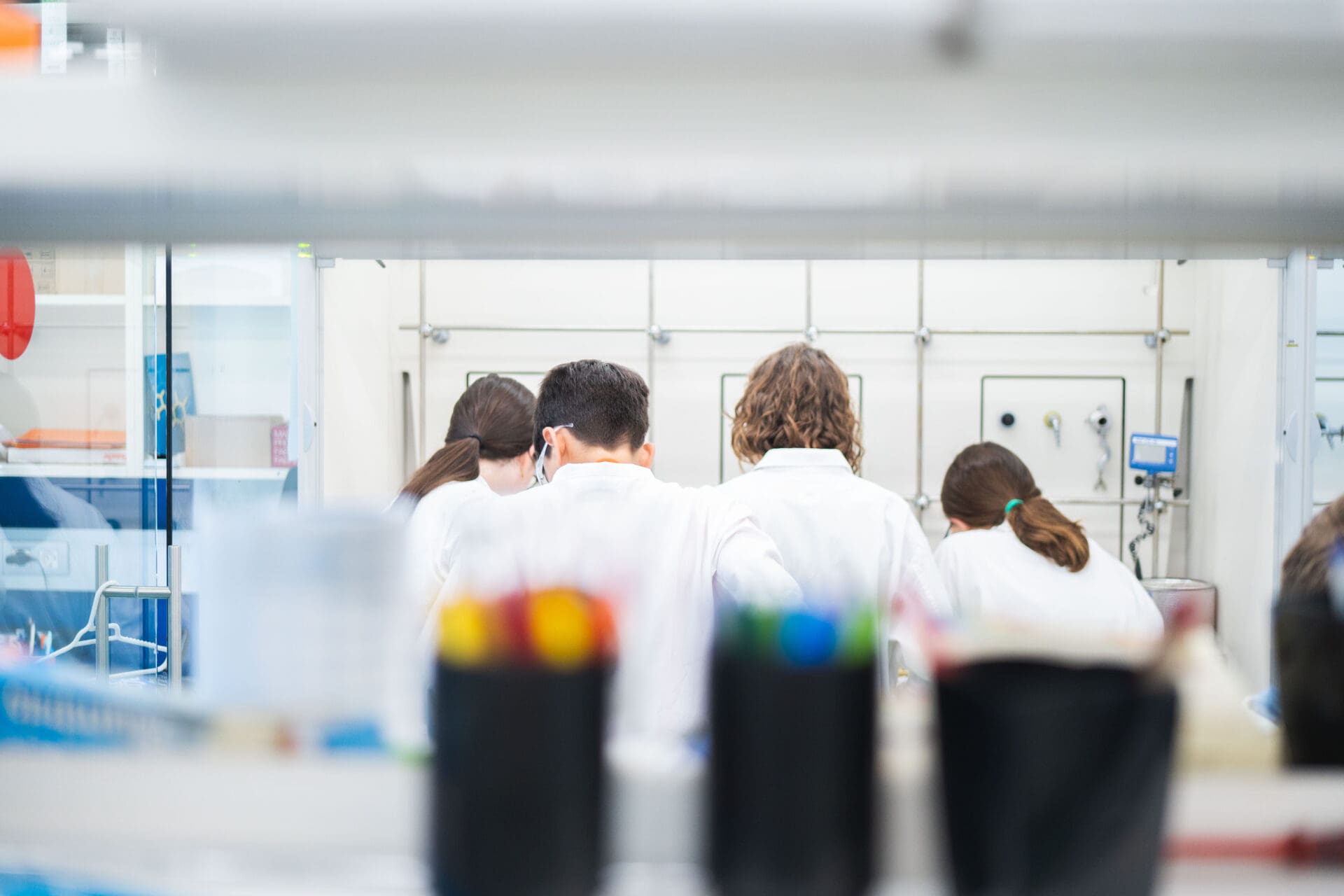A visible activated complex
Objective: Understand the concept of a catalyst in a very visual way

-
Laboratory materials
Heating plate
100 mL round-bottom flask
Graduated cylinder
1 vial
-
Reagents
Rochelle’t (sodium potassium tartate tetrahydrate, KNaC4H4O6·4H2O), 2.5 g
Coblat chloride (II) hexahydrate (CoCl2·6H2O)
Hydrogen peroxyde 6%, 10 mL
Water
-
Safety
Don't forget the gloves, lab coat, and safety goggles!!!
-
Questions
Why is heat necessary?
What is observed when the mixture is heated at 85 ºC?
Which effect causes the addition of the cobalt chloride? Which role does it play in the reaction?
Why does the reaction restart when more hydrogen peroxide is added?
Is the catalyst consumed? Explain why.
Procedure
- Prepare another solution of 2.5 g of Rochelle salt in 30 mL of water in the round-bottom flask.
- Add 10 mL of 6% hydrogen peroxide to the Rochelle’s salt solution and heat the mixture to 85ºC. Observe what happens.
- Add a spatula of cobalt chloride solution to the previous mixture and observe what happens.
- Add another 10 mL of H2O2 and observe what happens.
Theoretical explanation
In this experiment, hydrogen peroxide oxidizes Rochelle’s salt to produce CO2. When heating the initial mixture to 85ºC, the slow appearance of a gas indicates that the reaction is occurring. With the addition of cobalt chloride, this transformation is catalyzed, meaning the reaction rate increases, resulting in the formation of foam. Simultaneously, there is a color change indicating the involvement of the catalyst. The Co2+ ion (pink color) is oxidized to Co3+ (green color) while forming a complex with the tartrate ion, which facilitates the oxidation to CO2. At the end of the reaction, cobalt is reduced and returns to its initial color, suggesting that it is not consumed during the reaction. To verify this, we add hydrogen peroxide again and observe that the catalyst continues to perform its function. This happens because Rochelle’s salt is in large excess with respect to the H2O2.
The reaction can be represented as follows:
4 H2O2 + C4H4O62- 4 CO2 + 2 OH– + 6 H2O















